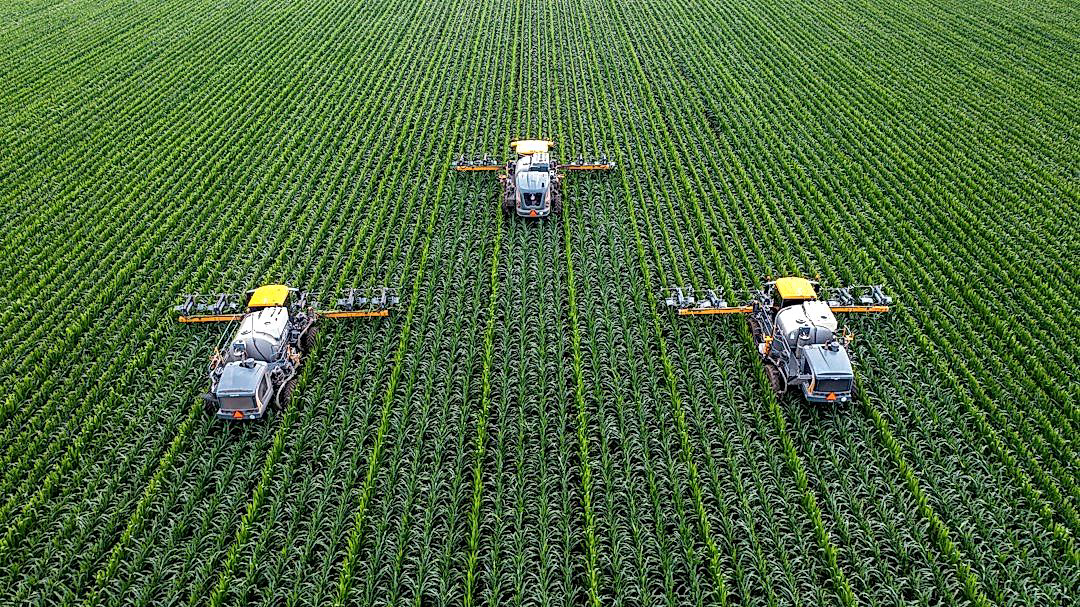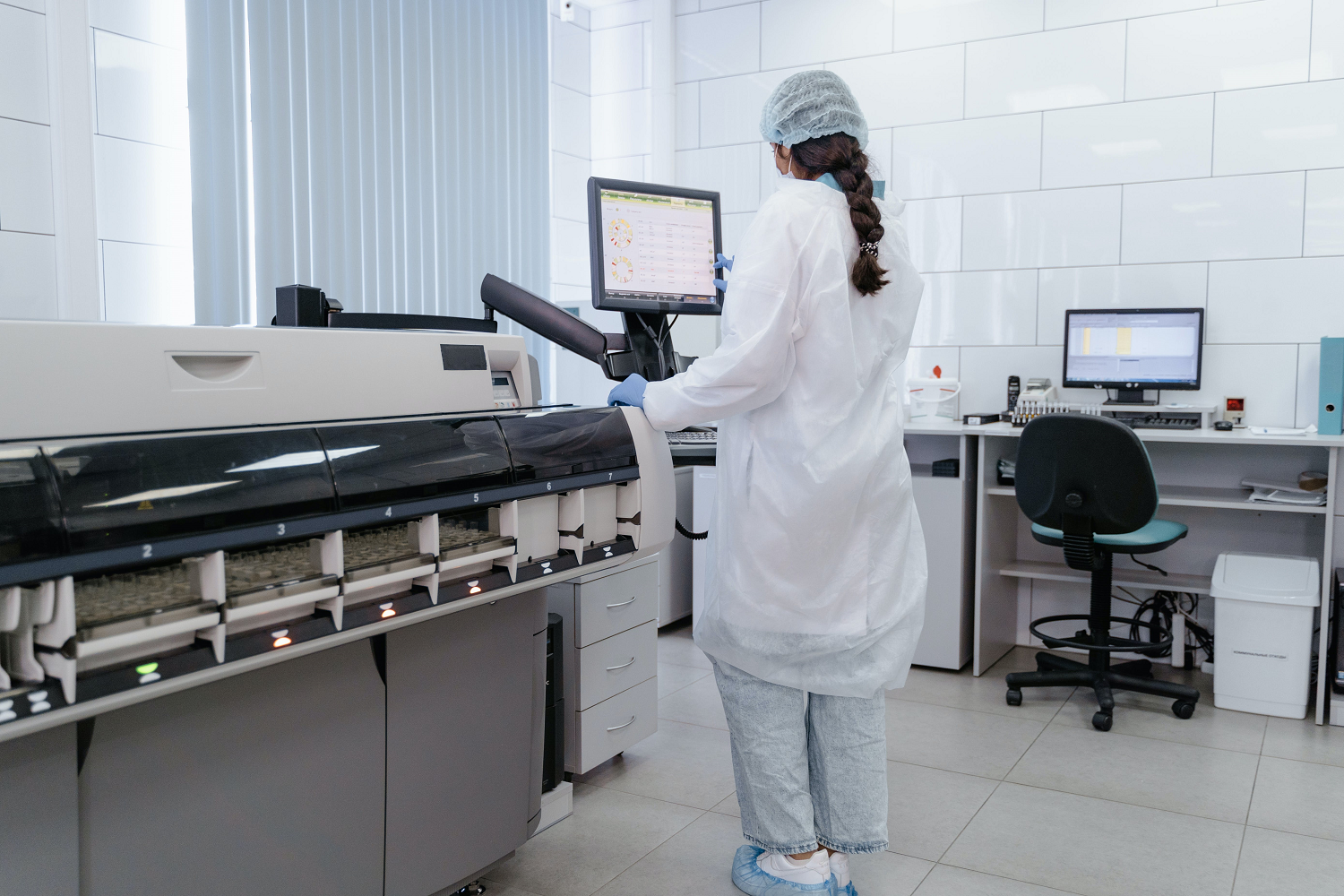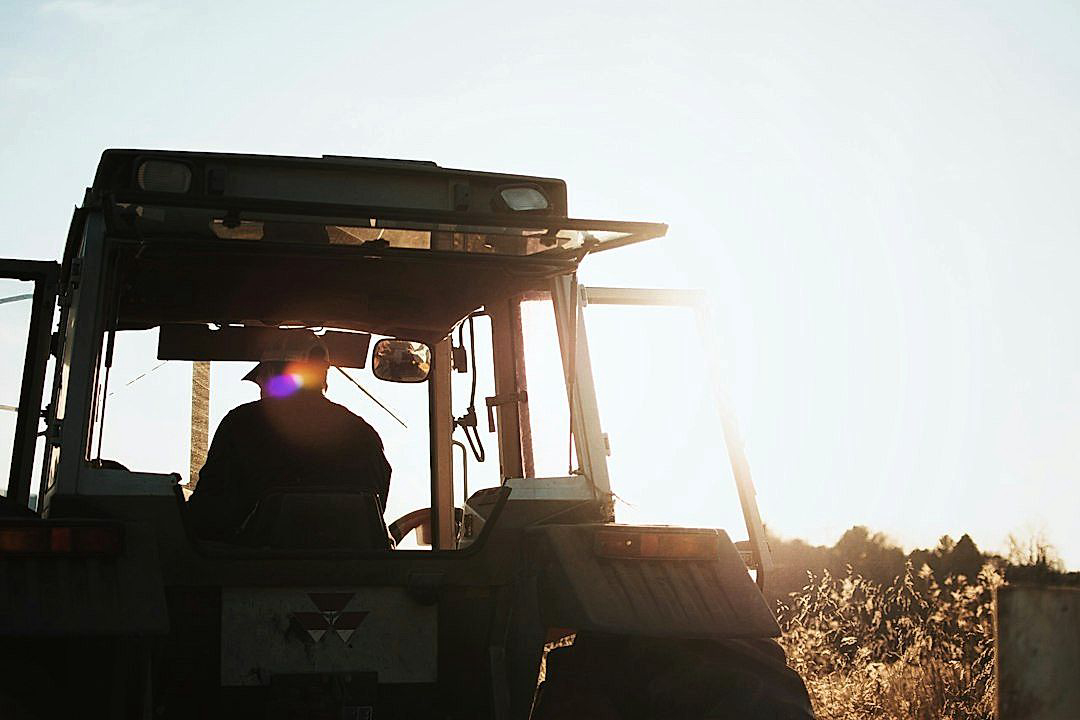The advent of technology has radically altered various sectors, with agriculture being no exception.
Inevitably, the digital revolution and continuous technological advancements have significantly contributed to its transformation.
Acquiring an understanding of how smart gadgets have a strong and promising effect on produce agriculture is imperative for industry players.
Agricultural process optimization, resource management, and predictive analytics – all are powered by smart gadgets.
This article delves into the beneficial impacts and potential developments that these tools offer.
The focus will primarily revolve around discussing the advancements in agri-tech solutions, their effectiveness, and their influence on produce agriculture.
Contents
- Smart Gadgets Transforming Produce Agriculture
- 1. Precision Agriculture Drones for Crop Monitoring
- 2. Intelligent Irrigation Systems for Water Conservation
- 3. Soil Sensors for Optimized Plant Growth
- 4. Robotic Harvesters for Efficient Picking
- 5. AI-Powered Weed and Pest Control Devices
- 6. Greenhouse Automation for Controlled Environment Agriculture
- 7. Smart Tractors for GPS Guided Plowing and Seeding
- The Bottom Line
Smart Gadgets Transforming Produce Agriculture
1. Precision Agriculture Drones for Crop Monitoring
The application of smart gadgets in agriculture is revolutionizing the way we approach farming, with one of the most notable advancements being the use of precision agriculture drones.
These drones, commonly referred to as agricultural drones, are enhancing the way farmers monitor their crops, resulting in more efficient and sustainable farming practices.
Equipped with advanced sensors and imaging capabilities, these drones are capable of observing crops from above and collecting detailed data about their health and productivity.
The use of such data can help farmers to detect issues early on, assess crop health more accurately, and apply resources more effectively, leading to increased yields and income.
The imaging tools on these drones can capture various types of images, such as multispectral images, that can reveal information invisible to the naked eye.
For instance, a change in the color of a crop can indicate disease or stress, giving farmers the opportunity to take remedial action before substantial damage occurs.
These drones can frequently monitor fields without causing any disruption, which can be pivotal during critical growth periods of the crops.
It would be labor-intensive and time-consuming for farmers to manually check the vast expanses of their farms as frequently or as accurately as these drones can.
By reducing labor needs and increasing efficiency, precision agriculture drones are contributing to a new era of smart farming.
Precision agriculture drones can also be beneficial in terms of sustainability.
Close monitoring of crop health and precise identification of problem areas can lead to targeted application of pesticides and fertilizers, thus reducing their overuse and associated environmental impact.
The use of these drones also assists in crop forecasting, helping farmers to predict yield more accurately and plan agricultural operations more proficiently.
While being used for regular crop monitoring, drones can also be equipped with sprayers to perform the targeted application of pesticides or other treatment materials, turning into a versatile tool for precise and intelligent agriculture.
Despite the initial investment, the use of precision agriculture drones could potentially lead to significant savings in the long term, making them an attractive value proposition for many farmers.
It’s clear that the precision agriculture drones are reshaping the agricultural sector, enabling us to achieve better productivity, efficiency, and sustainability in farming.
The adoption of these drones is just one example of how smart gadgets are transforming produce agriculture.
2. Intelligent Irrigation Systems for Water Conservation
With the increasing concerns about climate change and water scarcity, water conservation is now more than ever a hot topic in agriculture.
The development of intelligent irrigation systems is part of the solution, aiming to use water more efficiently and reduce wastage.
These advanced systems employ a variety of smart technologies like sensors, automated controls, and AI algorithms.
The goal is to provide the right amount of water at the right time, improving crop yields while decreasing water use.
Modern intelligent irrigation systems use soil moisture sensors to determine the exact water needs of the crops in real-time.
These sensors measure soil moisture at different depths, providing accurate data on the watering needs of different crop types.
Upon receiving this data, the system’s automated controllers then adjust the irrigation timing and quantity accordingly.
These smart irrigation systems even factor in other crucial variables such as the weather forecast and evaporation rates.
By doing so, they prevent overwatering during rainy days and adjust irrigation schedules to compensate for increased evaporation during hot and windy weather.
What makes these systems incredibly convenient is the remote control capabilities they offer.
With smartphone apps and web interfaces, farmers can monitor and control their irrigation systems from anywhere at any time.
This not only saves valuable time and effort but also adds an extra layer of flexibility and precision into the entire process.
Apart from saving water, these intelligent irrigation systems also bring economic benefits.
Improved water management means less water wasted, which translates into significant cost savings over time.
Moreover, the better growth and higher yields resulting from precise watering can also boost profitability significantly.
As climate change keeps threatening agricultural water supplies, the importance of intelligent irrigation systems cannot be overstressed.
By adopting these smart gadgets, farmers not only do their part for the environment but also improve their farming productivity and profitability.
3. Soil Sensors for Optimized Plant Growth
The Soil Sensors technology presents an innovative approach to maximizing plant growth as an element of Smart Gadgets Transforming Produce Agriculture.
These intelligent devices are engineered to facilitate a detailed understanding of the soil’s vital properties and conditions, giving farmers precise data on which to base their farming decisions.
The sensors function by monitoring temperature, moisture levels, light intensity, and various other factors crucial for the ideal growth of crops.
With the data amassed by these tools, farmers can optimize the use of fertilizers, improve irrigation practices, and enhance the overall crop yield.
Soil sensors provide farmers with crucial insights into the health and needs of their soil, thereby allowing for more targeted efforts in taking care of the crops.
The function of soil sensors goes beyond data collection as they have automated systems that send real-time updates and alerts to farmers, notifying them of any drastic changes that can affect plant growth adversely.
The objective of these sensors is to maximize crop yields by ensuring that the soil maintains the optimum condition necessary for vigorous crop growth.
Importantly, these devices are not one-size-fits-all; they are produced to cater to different soil types, presenting a versatile tool for farmers no matter the soil structure they are dealing with.
Often, these sensors are easy to install and do not require any professional expertise, allowing farmers to effortlessly integrate them into their farming practices.
Moreover, many soil sensors are solar-powered, thus eliminating the worry of changing batteries and making them a sustainable choice for farmers attentive to their environmental impact.
These soil sensors play a significant role in sustainable farming practices by reducing over-fertilization, enhancing water management, and ultimately minimizing the environmental footprint of agriculture.
Along with their many benefits, it is key to note that these devices are part of a larger trend in agriculture technology aimed at achieving precision farming.
Thus, with a soil sensor in place, farmers have a powerful tool that not only provides crucial data but also helps to reduce waste and improve sustainability.
The advent of soil sensors marks a significant advancement in the agriculture industry, and their potential for optimizing plant growth is undeniable.
As technology continues to evolve, the possibilities for what soil sensors may be able to accomplish in the future are endless.
4. Robotic Harvesters for Efficient Picking
The future of agriculture is increasingly being defined by technological advancements such as robotic harvesters.
These robotic harvesters are impressively efficient and capable of picking a variety of crops with speed and accuracy that far outpaces human labor.
Unlike humans, they can work 24/7 without fatigue, significantly boosting productivity.
Above all, they minimize crop damage, which often happens during manual picking, thus reducing overall waste.
These smart machines are designed to be gentle and meticulous, ensuring that every piece of produce is harvested at its optimal stage of ripeness.
The installation of these robotic harvesters may represent a substantial initial investment, but the return on investment over time is significant.
As the cost of labor rises and the number of available farmworkers dwindles, robotic harvesters represent a solution to the pressing agricultural issues of today.
Furthermore, these robotic harvesters can operate in various weather conditions, eliminating the delays and productivity dips typical in traditional farming.
Also noteworthy is their potential to improve working conditions in the agriculture sector.
With less dependence on manual labor for harvesting, workers can be moved to less physically demanding roles.
They’re also equipped with cutting-edge technology like GPS navigation and sensors to map the details of the field and locate ripe crops for accurate harvesting.
Using real-time data processing, the robots can even make immediate decisions on care and harvesting, proving beneficial not only for the growth but also for the yield.
Moreover, these robots can be programmed to perform multiple tasks based on need, such as pruning, thinning, and crop inspection.
Increasingly, farmers are turning to robotic harvesters as a way to overcome challenges related to labor shortage, rising wages, and increasing demands for fresh produce.
To sum up, while such technology may seem futuristic, the truth is that robotic harvesters are already changing the landscape of produce agriculture for the better.
5. AI-Powered Weed and Pest Control Devices
One of the significant challenges that farmers face in agriculture is managing and combating weeds and pest infestations, that can severely degrade the quality of the produce if not handled timely and correctly.
Fortunately, the introduction of AI-powered weed and pest control devices is radically improving these aspects within farming practices by not just identifying pest or weed infestations but also taking corrective actions nearly autonomously.
Artificial Intelligence (AI) is a groundbreaking technology that has brought a paradigm shift by introducing automated solutions across diverse sectors, agriculture being one of them.
These innovative AI-powered devices leverage machine learning algorithms and image recognition techniques to accurately identify the types of weeds and pests affecting the crops.
AI-powered weed and pest control system’s real power lies in its ability to not just detect but also predict potential infestations, allowing farmers to be proactive rather than reactive, significantly alleviating the damages.
The systems are designed to discern the differences between crops, weeds, and pests by using detailed spectral analysis of the images captured by their high-resolution cameras or drones.
These detailed spectral images enable the systems to differentiate between plant species and insect types, thereby identifying crop-threatening components accurately, ensuring precise pest control.
The action is then taken using mechanical means like spraying a precise quantity of pesticides or herbicides only on the affected areas, hugely reducing the volume of pesticides used, leading to more sustainable farming.
This level of precision is critical and improves efficiency significantly as it lessens the overall usage of harmful chemicals, minimizing the potential risk to the full harvest and the surrounding environment.
Apart from the operational efficiency, these AI-driven devices offer comprehensive data analysis and observations about the field’s health and potential crop threats, hence offering a robust preventive tool that could potentially revolutionize agriculture.
This technology’s potential is still ever-expanding, with work underway on advanced systems that can adapt and learn from local conditions and deal with new types of pests or weed species.
Furthermore, these AI-powered weed and pest control devices can easily be integrated with other smart agricultural tools like GPS-based farm equipment, drones and weather monitoring devices to enhance overall farm productivity.
Ongoing research and development promise to make these systems more affordable, accessible and even more efficient, potentially transforming the agriculture landscape.
In essence, AI-powered weed and pest control devices represent a significant leap forward in harnessing technology for sustainable and efficient farming.
6. Greenhouse Automation for Controlled Environment Agriculture
One of the key transformations in modern agriculture comes in the form of Greenhouse Automation.
This up-and-coming technology utilizes smart gadgets to improve efficiency and productivity in a controlled environment.
The basic idea behind these advanced systems is to mimic the natural environment of plants, while optimizing the conditions for their growth.
These automated systems comprise various smart gadgets, each tasked with controlling a specific aspect of the greenhouse environment.
Greenhouse automation systems are essentially the ‘brains’ behind controlled environment agriculture, adjusting conditions as needed for optimal plant growth.
One essential component is the irrigation system.
Smart irrigation systems in greenhouses help ensure that plants get the exact amount of water they need, thereby conserving water and maximizing yield.
These systems are made even smarter by incorporating sensors that monitor the soil moisture levels, triggering the irrigation when needed.
The automated climate control is another integral part of greenhouse automation.
This involves temperature, humidity, and light control devices that constantly monitor and adjust these variables for optimal plant growth.
It has been observed that plants grown in such an environment have a higher yield, are of better quality and take less time to grow.
Moreover, other crucial components such as carbon dioxide generators and nutrient dosing systems are used to regulate the CO2 levels and supply necessary nutrients to the plants respectively.
In this way, greenhouse automation can make the entire farming process more efficient, reducing manual labor and increasing output.
Another prominent feature of these automated systems is their connectivity.
Most of these smart gadgets are connected to a central system, either wired or wireless, which allows real-time monitoring and adjusting of the greenhouse environment from anywhere in the world.
Not only does this mean less manual labor, but it also makes managing larger and more complex greenhouses possible.
Overall, the adoption of this technology is leading towards an agriculture revolution which is environmentally sustainable and economically beneficial.
7. Smart Tractors for GPS Guided Plowing and Seeding
As part of the innovative wave of smart gadgets transforming produce agriculture, smart tractors have emerged as a significant game-changer.
Employed for GPS guided plowing and seeding, these tractors bring a new level of precision and efficiency to an age-old practice.
By combining advanced GPS technology with the traditional functionality of a tractor, farmers now have the potential to optimize their resources and boost crop yields.
These smart tractors, equipped with GPS, offer advantages including decreased fuel usage and machinery wear, accurate planting, and effective resource management.
Thanks to this technology, tillage, planting, and harvesting can be done more precisely, resulting in lesser wastage and maximum utility of arable land.
GPS technology allows these tractors to monitor and adapt to the topography and soil conditions of individual fields, leading to improved quality and yield of crops.
Navigational assistance provided by the GPS not only ensures accurate plowing and seeding but also goes a long way in preventing overlaps and misses which are common pitfalls in manual operations.
Moreover, the data collected by these tractors can be used to fine-tune farming strategies and practices for future cultivation cycles.
These smart tractors can operate around the clock, thereby significantly reducing the time taken for plowing and seeding.
They can also autonomously navigate around obstacles, thus minimizing potential damage to crops or equipment.
Precision agriculture through smart tractors also leads to considerable savings on seeds, fertilizers, and other resources, thereby making farming more sustainable and profitable.
Even in adverse weather conditions, these smart gadgets continue to function, ensuring effective utilization of time and available resources.
The emergence of these tractors represents a paradigm shift in farming, marrying modern technology with traditional agricultural practices.
One thing is clear, the future of produce agriculture is indeed being transformed by these smart gadgets, one tractor at a time.
The Bottom Line
The adoption of advanced tech tools in farming illustrates the potent force of technology in modern agriculture.
Precision agriculture drones, intelligent irrigation systems, soil sensors, robotic harvesters, and AI-powered weed and pest control devices transform the efficiency, productivity, and sustainability of farming operations.
Greenhouse automation and GPS-guided smart tractors further streamline various farming processes, demonstrating the possibility of high-precision and labor-saving agriculture.
Indeed, the integration of these technologies points to a future of agriculture that is not only digitally-driven but also economically and environmentally sustainable.
This transformation testifies to the evolution of farming practices and the unlimited potential of tech-integrated agriculture.




